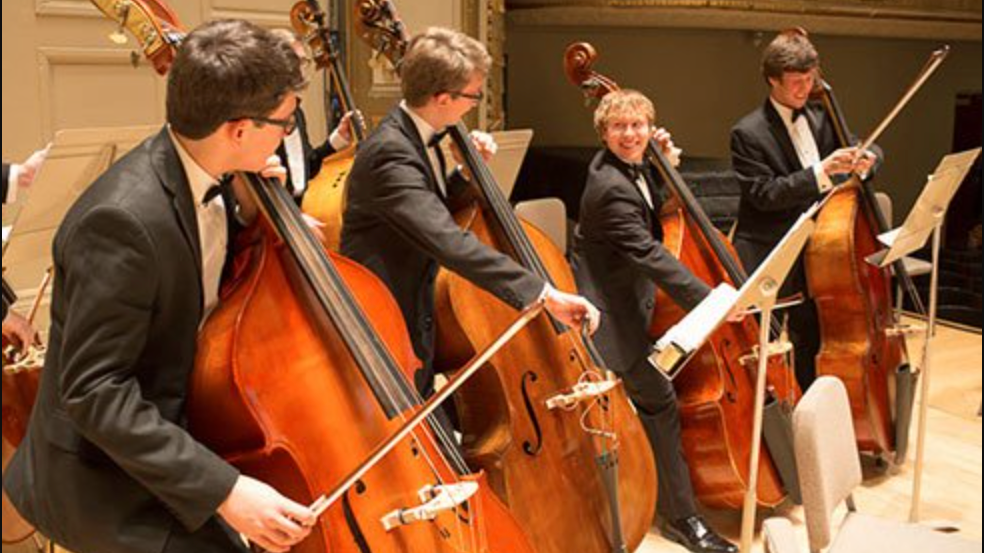A Stunning Revelation from BPYO

Even in the context of Boston’s established music scene, Boston Philharmonic’s Youth Orchestra’s concert on Friday in Symphony Hall was a remarkable and stunning revelation. With youth orchestras, one is prepared to make allowances, but I assure you that none was necessary in this riveting performance—neither in the ensemble and articulation of the string ensemble in the breathless opening motive or many note-filled and exposed string passages throughout Verdi’s Overture to La forza del destino, which opened the program—nor in the intonation, tone color, and accuracy of singing line in the treacherous high-lying viola section first movement solo of the closing Shostakovich 5th Symphony. We have all heard professional orchestras struggle under these particular challenges, which the Boston Philharmonic Youth Orchestra sailed through with ease, finesse, energy and musical line under the alert alchemy of Benjamin Zander. I suspect the many key musicians named in the program, who prepared the different sections of the orchestra, also contributed heavily to the confidence and skillfulness.
The two movements we heard from Michael Gandolfi’s evocative The Garden of Cosmic Speculation (Introduction: Zero Room, and Soliton Waves) come from a larger work inspired by an actual garden in Scotland which seeks to physicalize scientific concepts such as specific waves into natural garden forms. The selections gave plenty of opportunity to the young musicians to clarify and express in their music-making the polar elements of confusion, synaesthesia, syncopation, coherence, and order. Whereas the work began with solo bird-calls bringing us directly into nature itself, and then quasi-synthesized sounding undulating orchestral textures, it soon gelled into more defined but ever changing musical gestures, rhythmic coherences, and splashes of colors. The second movement erupted in perpetual motion and strong, catchy rhythmic alignments of different instrument groups—performed with gusto and accuracy by the young performers of BPYO.
Christopher O’Riley, the well-known soloist in Ravel’s Piano Concerto in G Major, was ably matched by the precisely articulated trumpet and woodwind solos and emerging warm string lines from the orchestra which frame this unusually non-declamatory but subtly colored piano concerto. The young players’ responses to the keyboard’s rhapsodic statements allowed for a genuinely relaxed and free-wheeling dialogue; they responded to his every inflection of mood in the middle movement, and supported his every rhythmic thrust in the last. Special mention must be given to the extraordinary Nicole Caligiuri for her beautiful handling of the English horn solo.
O’Riley responded to his ovation with an encore, Shostakovich’s Prelude No. 18 in F Minor (from 24 Preludes and Fugues, Op. 87), which served as an apt prelude to the second half.
Zander drew a gripping account of the sometimes desolate Shostakovich Symphony No. 5. Starting with a perfectly inflected series of declamatory opening statements from the string sections, woodwind and brass choirs responded with equal precision, and increasing passion as the movement gathered force and dynamic and then tapered back into its original carefully gauged despondency. Zander’s well-chosen tempi and leadership were in evidence throughout the concert, but nowhere more conspicuously than in the perfectly poised and buoyant second movement dance-like quality with its tart violin solo by concertmaster Max Tan (there were several gifted concertmasters!). Zander’s various prismatic changes during the somber introverted third movement and the more aggressive sailing, wailing, and striding of the final movement were all striking. His pre-performance explanation and executed resolution of the controversy over the final tempo marking which ends the piece were reinforced by the conviction and rightness of the whole performance by BPYO, which on this night, could hold its own against that of any orchestra in the world.
The concert repeats at Carnegie Hall at 8:00 PM on December 9.
Click here to listen to the performance.
 Peter Mark - The Boston Musical Intelligencer
Peter Mark - The Boston Musical Intelligencer